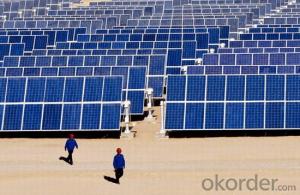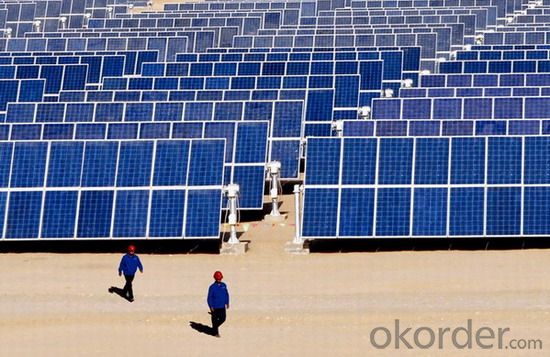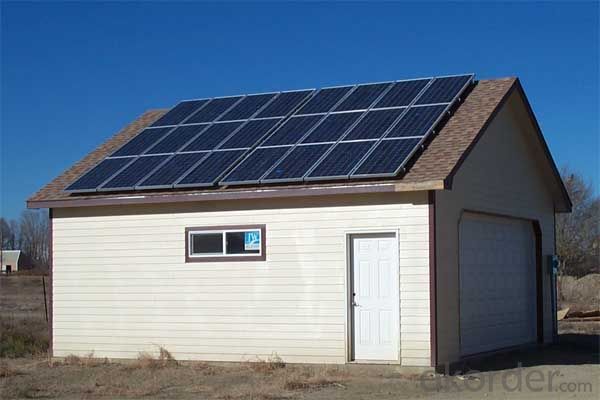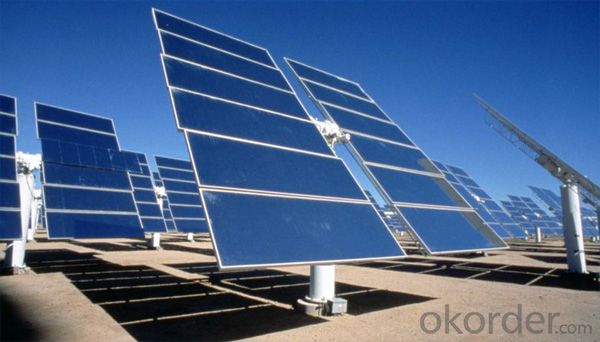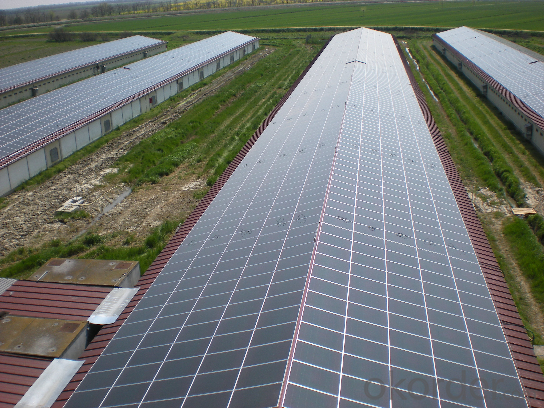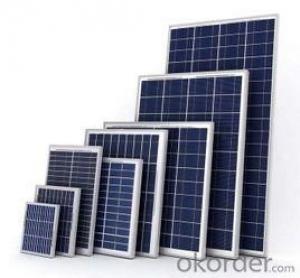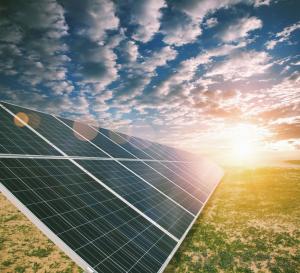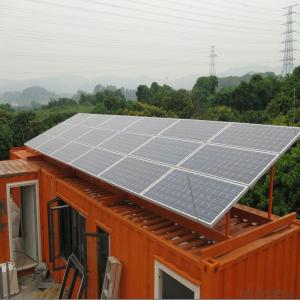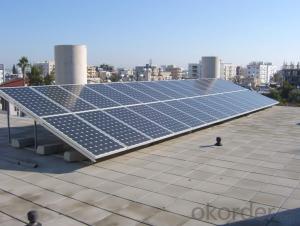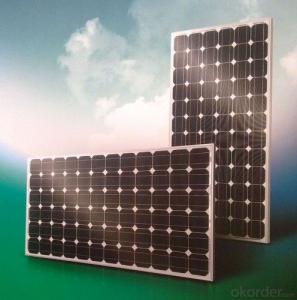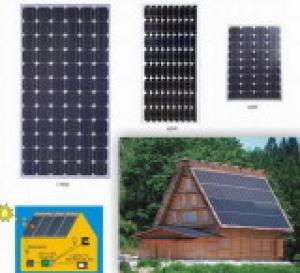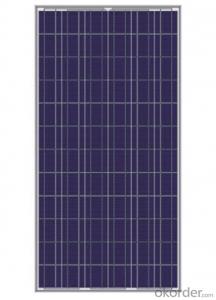CNBM Solar Monocrystalline 156 Series 40W Solar Panels Manchester
- Loading Port:
- Shanghai
- Payment Terms:
- TT OR LC
- Min Order Qty:
- 1000 watt
- Supply Capability:
- 20000000 watt/month
OKorder Service Pledge
OKorder Financial Service
You Might Also Like
Specification
Materials
Silicon
Guarantee
12 yrs free from defects in materials and workmanship
No less than 90% within 10yrs and no less than 80% within 25yrs
TUV(IEC61215&IEC61730), CE, UL
Application
Photovoltaic/ solar/ green energy/ energy saving
Descriptions
1.High efficiency crystalline silicon solar cell. Even if under the weak light, the solar module can produce maximum power output.
2.Tempered glass (toughened glass): Anti-reflecting coating and high transmission rate glass increase the power output and mechanical strength of solar module.
3. EVA and TPT: Using high quality EVA and TPT to prevent destroying and water.
4. AI frame: Without screw, rner connection. 6 holes on the frame can be installed easily.
5. Junction box: Multi function junction box with water proof.
6. Long lifetime: ≥25 years; Less power decrease.
7. Good performance of preventing from atrocious weather such as wind and hails.
8. Resisting moisture and etching effectively, not effected by geology.
9. The certificate issued by international authority: UL, TUV, IEC, CE.
Packaging Details
26pcs/pallet, 28pallets/ 40HQ
Our solar panels are packed in cartons, and then pallet.
Shipping by sea or by air are both ok, it up to customer’s chose.
We’d like to inquiry the freight cost for customer after be informed exact quantity and destination address.
CNBM International Corporation is a professional solar panel manufacturer in China for CNBM brand . Silicon panel ( silicon module), as our main product, has high quality and good service. Our products are very popular in Europe, Australia, England, Middle East, Mexico, Argentina, Chili, Singapore and Africa.Furthermore, our products have gained international authorized certificates like TUV, UL and CE.
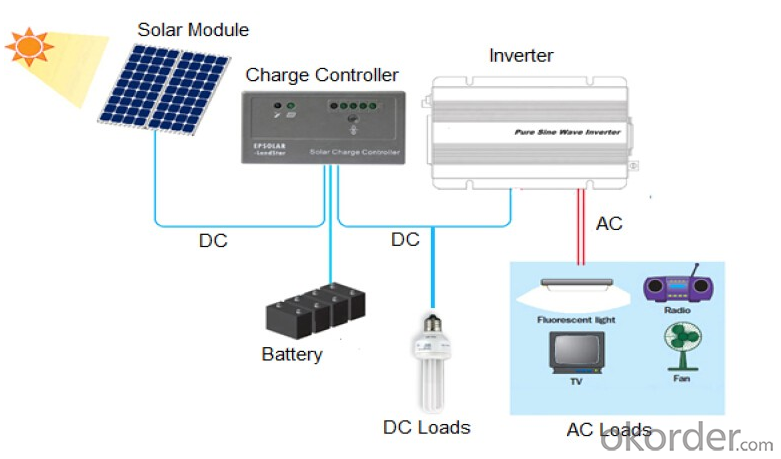


Why Choose Us
A. Professional Manufacturers , Strict quality control & power classification Silicon Solar PV Module
B. 100% A grade solar cell with Positive tolerance power range.
C. High Conversion Efficiency , High transmission rate , low iron tempered Anti-reflecting/coating film 3.2mm glass
D. Anti-aging & high visosity EVA
E. high frame resistant & Double-sided fluorine TPT
F. Anodized aluminum alloy high thickness frame
G. 3 or 6 bypass diodes , 90mm 4m2 cable , MC4 connectors & waterproof junction box
H. Long life, Easy installation, high wind & hail impact resistance
I. Be resistant to atmospheric exposure & effects of delamination
J. ISO9001:2008/ISO14001:2004/OHSAS18001:2007/ CE /TUV/CEC/ IEC/EN61215 IEC/EN61730/CHUBB INSURANCE
K. 10Years Manufacturing Quality Warranty , 10Years 90% Power output Warranty, 25Years 80% Power output Warranty
- Q: Didnt solar panels use to cost around $250,000 5 years ago?
- For just 5 years ago, certainly not! Perhaps you are thinking of 50 years ago, the kind that was put on the early communication satellites? 5 years ago, there was a glut of polysilicon, so modules were actually a little cheaper than today. Solar cell makers were basically using the scraps thrown away by chipmakers. But today, more silicon goes into making solar cells than computer chips, so that bonanza is gone. We will see prices going lower this year, possibly 20% from last year, because of improvements in technology, but also an increase in polysilicon supply, and a slowdown in demand due to worldwide recession. Later this year is a good time to buy panels, if you have the cash. The industry site below tracks module prices. They used to have more data, but I guess the old data rolls off the screen with time. If you want to see the details, they'll charge you for the report.
- Q: I contend:As far as the solar panels causing global warming I'll try to explain. If you put a black panel on the ground or on your house and don't connect it to anything, it will absorb solar energy (heat) during daylight and release it at night (radiation). The net heat gain is zero. If you hook up a solar panel in the same place but hook it up to batteries, charge the batteries during sunlight hours and using that energy to electrically heat the home at night. The panels will absorb solar energy during the day but will convert that to electrical energy in the batteries instead of radiating it back into space at night. The result is a net gain in earth's temperature.Right or wrong?
- As far as it goes, you're right: putting up a big black object increases the total amount of energy absorbed from the sun. But that's only part of the story. If you didn't put up the solar panel, the same radiation would hit the earth. The earth already absorbs 2/3 or so of the energy that comes in (albedo .30), so adding even a perfectly black object increases it only by 50%. But it's not even that much, because most of the extra energy absorbed is converted into electricity. Solar panels are about 0-5% efficient, so half of the extra energy is turned into electricity rather than heat. Eventually it's put to use and turned into heat, but that heat was going to come from somewhere else anyway. (Even if it's just powering your DVD player, it turns into heat just the same as if you were using it to heat your house.) If you dig up a gallon of petroleum or fission a microgram of uranium, that's heat introduced into the earth's atmosphere. And these processes are inefficient: between generation and transmission you lose about 75% of the energy, meaning you've introduced 4 times as much energy into the atmosphere as you've actually used. So with a solar panel, you add extra heat to the earth by about 25% of incoming solar radiation, but you've offset external costs by about 45% of incoming solar radiation. The net effect is to cool the earth. And that assumes that the solar panel itself is perfectly black, which isn't the case. Real commercial solar panels have an albedo of about .35, which makes them more reflective than dirt and considerably more reflective than asphalt shingles, which have .03 albedo. In other words, even if you didn't actually use the solar panels for electricity, they'd be cooling the earth just by reflecting energy back into space more than your regular shingles.
- Q: Can solar panels be used to power a film set?
- Yes, solar panels can be used to power a film set. Solar panels convert sunlight into electricity, which can be used to power various equipment and lighting on a film set. This renewable energy source offers a sustainable and environmentally friendly alternative to traditional power sources.
- Q: Can solar panels be used in areas with high levels of drought?
- Yes, solar panels can be used in areas with high levels of drought. Solar panels are not affected by water scarcity as they do not require water for their operation. They generate electricity by converting sunlight into energy, making them suitable and effective in dry climates.
- Q: Do solar panels require regular cleaning?
- Yes, solar panels do require regular cleaning to ensure optimal performance. Dust, dirt, and other debris can accumulate on the surface of the panels over time, blocking sunlight and reducing their efficiency. Regular cleaning helps to remove these obstructions and maximize the energy output of the solar panels.
- Q: I am in the market for buying a home. There is one for salke that actually has solar panels on top. How are they used? Do you need to pay for gas and electric still. Does it really light up the house and keep it warm. WHat about the AC keeping hte house cool in the summer does it work for that too? Please explain in solar for dummy terms. I haveno clue about solar panels other thatn the fact that it needs sunlight to run.
- Okay--here it is (without the techie buzzwords!) Solar power has a start up cost--the panels and related equipment. But the amount it cost to operate is virtually zero--pretty much jsut servicing th equipment o keep it working properly--much as you do any other appliance. How much electricity you will still have to buy depends on four things: a) how much your system can produce. If you have a 4000 watt system, you'll still buy a fair amount of power. Abigger one--and you will need less from the power company b) how efficient you (your home and appliances are). The more efficient, the less electricity you use. Obviously, things lie CFL bulbs are very helpful here c) Are you willing to invest in a battery storage system to store electricity from the system for use at night? Right now, that's still pricey. But these are starting to come on th emarket more. If you aren't ready to do tha tnow, you can always add it in later. d) can you sell excess power back to the power company.? In California, the law requires utilities to do this--but its not a universal yet, so it depends on where you are. How this works: you are still hooked up to the power company. Any time you need more power than the solar system produces, yur system jst draws it off the power grid--jsut as always. But--any time you are using LESS than the amount of power your system is producing, the excess automatically feeeds back into the electric grid and a special peter credits you with the power. There are cases wwhere people have goene on a long vacation in California and when they got home, the power company owed them several hundred dollars! You'll need to do some research, price thngs, take your own lifestyle into account, and decide what the best choices for you are. It sounds complicated--and to an extent it is. But the reason is tha tyou have a lot of choices tha tyou can make work to your advantage, instead of jsut writing a fat check to the power company every month!
- Q: How do solar panels affect roof ventilation?
- Solar panels can potentially affect roof ventilation by creating shade and reducing airflow, which can result in higher temperatures and reduced effectiveness of the ventilation system. However, this impact can be minimized by using solar panel mounting systems that allow for proper airflow and by ensuring adequate spacing between the panels and the roof surface.
- Q: Do solar panels work with any type of heat or only sunlight? I have a bunch of little ideas floating around in my head and Id like to get them on paper but only if they really would work.Also does a concentrated amount of heat on one solar panel piece (quot;xor so) produce a higher or equal amount of electricity than a less concentration over a larger area?
- Solar photovoltaics require light, any kind of light. A torch would work, for example. The effect of concentration depends on the amount of light and the material you're shining it on. In CdTe, warmer temperatures and more intense light may lead to better performance. In silicon I think the opposite is true (I don't know though, I've only done research work with CdTe). It depends on properties of the semiconductor, like its band structure. To get an 'order of magnitude' estimate, you may assume a constant efficiency of solar cell so total amount of light (= area * intensity) largely determines the output in standard operating conditions.
- Q: I would like a list of the solar companies expanding or doing hiring or a good list in general. I know some are expanding. Best answer gets all the points
- damn I wish i could help you but I think the United States is too cool for solar I would move to Italy or Germany or China or India if you want a good solar job those guys know how to see into the future of energy
- Q: a fiber optic network could distribute solar energy from warm states to the rest of the country. Using a Federally created program,the energy would be used through a trust program to benefit all of our citizens equally. It would create thousands of jobs and help us with our dependence on foriegn oil supplies. This is no different than work programs created by the Feds during the 930's depression era.
- It's not a matter of Federal money or Federal programs or attitudes of the government that keeps your grand plan for generating large amounts of electrical power using solar panel systems and distributing it country wide with fiber optics from becoming a reality. It's technology. Whatever optimistic speculations you may have heard or read, large scale, dependable generation of electrical power at steady high levels from solar cells is nowhere near a reality. Some of the big culprits are the variable atmosphere of the earth and the inefficiency of practical and economic solar cells. The conversion does not depend on the warmth of the states where generation might take place but on constant direct sunlight, unobscured by clouds in the atmosphere for most of every day, and on high efficiency solar cells. No states can depend on clear skies 365 days of the year and there's the little matter of night time, when nothing would be generated. Also, the electricity generated by solar panels cannot be carried by fiber optics since they carry electromagnetic energy (light), not electricity. What may be possible sometime in the not-too-distant future is the use of solar panels to supplement, not replace, conventional power generating systems on a local basis. It would not be required that they provide constant high levels of power every day, but only that they provide power when conditions were right, in order to perform the valuable role of cutting down on the use of fossil fuels in conventional generating systems. (The direct current generated by solar panels would have to be converted to alternating current or stored in batteries to accommodate our present methods and equipment for using electric power.) As soon as this becomes technically and economically feasible, we will not have to wait long to hear about it from the energy corporations and politicians.
Send your message to us
CNBM Solar Monocrystalline 156 Series 40W Solar Panels Manchester
- Loading Port:
- Shanghai
- Payment Terms:
- TT OR LC
- Min Order Qty:
- 1000 watt
- Supply Capability:
- 20000000 watt/month
OKorder Service Pledge
OKorder Financial Service
Similar products
Hot products
Hot Searches
Related keywords
